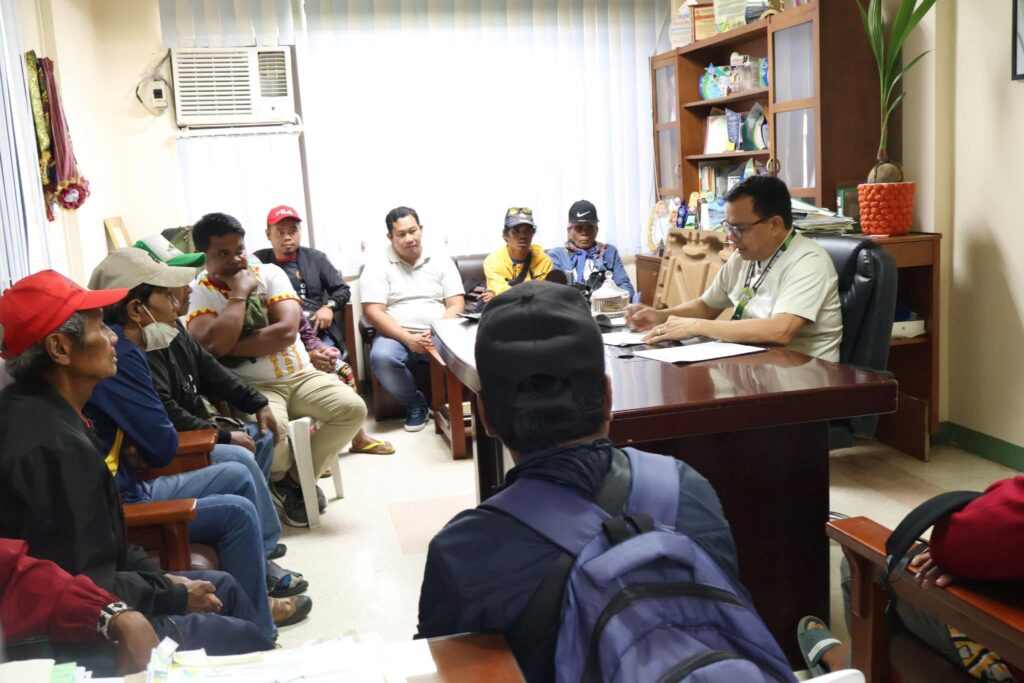DSWD Launches ‘e-Panalo’ in Bukidnon for 4Ps IPs

MALAYBALAY CITY, Bukidnon – The Department of Social Welfare and Development (DSWD), through its Pantawid Pamilyang Pilipino Program (4Ps), has officially launched the “e-Panalo ang Kinabukasan” initiative in Bukidnon — the first of its kind in the region — with subsequent rollouts planned across Mindanao in the coming days As part of its digital and […]
DOH-10 expands screening for cancer, heart disease

CAGAYAN DE ORO CITY (February 27, 2025) — Early diagnosis and screening services for various types of cancer and even heart disease are now readily available at public health centers across the region. The Department of Health Center for Health Northern Mindanao (DOH-CHDNM) has strengthened its early detection capacity in response to the rising cases […]
3-anyos batang babaye naligsan og sakyanan sa Valencia

Patay ang 3-anyos nga batang babaye human maligsan sa usa ka Mitsubishi Montero sa Purok-17C, Polinar Village, Poblacion, Valencia City, Bukidnon, gabii sa Pebrero 27, 2025 Ang biktima nakaangkon og grabeng samad ug bun-og sa lawas ug gidalikyat sa Valencia Polymedic Hospital, apan gideklarang patay paglabay sa pipila ka gutlo. Sumala sa report sa kapolisan, […]
Agri-10 4K continues to aid IP orgs in NorMin

CAGAYAN DE ORO CITY — The Kabuhayan at Kaunlaran ng Kababayang Katutubo (4K) program, a special initiative of the Department of Agriculture (DA), continues to assist Indigenous Cultural Communities (ICCs) and Indigenous People (IP) farmers and fishers by helping them develop their ancestral lands through sustainable farming. The program also aims to boost their livelihood […]
Don Carlos, Bukidnon declared insurgency-free

DON CARLOS, Bukidnon – “The declaration of Don Carlos town as insurgency-free marks a significant leap toward peace, reinforcing the government’s commitment to security,” said Capt. Rogelio Recto, Civil-Military Operations Officer and spokesperson of the Philippine Army’s 48th Infantry Battalion In an interview aired on Radio Mindanao Network Malaybalay station, Recto confirmed that Don Carlos […]
Bukidnon hits 1.4M PhilSys registrants, drives civil records up

MALAYBALAY CITY (PIA) – Civil registration in Bukidnon surged as the province reached 1.4 million Philippine Identification System (PhilSys) registrants, underscoring the key role of civil registration and demographic data in planning for health, education, and social welfare, according to Ma. Evangeline Non, chief of the Philippine Statistics Authority (PSA)-Bukidnon She reported that of the […]
2 pilots found dead inside FA-50 fighter jet in Bukidnon mountain

MANILA, Philippines (12:32 PM March 05, 2025) — The remains of two pilots aboard a missing FA-50 fighter jet were found on Wednesday inside the aircraft, which crashed in the Kalatungan mountain range in the Bukidnon province In an interview, Lt. Gen. Luis Rex Bergante, commander of the Armed Forces of the Philippines (AFP) Eastern […]
PhilHealth to expand services to Bukidnon IPs

CAGAYAN DE ORO CITY (February 11, 2025, 9:42 pm) – The Philippine Health Insurance Corp. (PhilHealth) is working to expand its coverage to indigenous peoples (IPs) in Bukidnon province PhilHealth Bukidnon local health insurance chief Romulo Lapuz Jr. said on Tuesday that one of the agency’s goals is to provide free health insurance to the […]
P23 minimum wage hike in Northern Mindanao takes effect

CAGAYAN DE ORO CITY — The daily minimum wage in Northern Mindanao increased by P23 for private non-agricultural workers starting January 12, 2025. Agricultural workers also received a P23 increase on the same date, with an additional P12 effective July 1, 2025, bringing the total increase to P35 This means that by July this year, […]
Bukidnon teacher Junmerth Jorta among the top 50 finalists of 2025 Global Teacher Prize

MANILA, Philippines (Feb 09, 2025, 08:08 AM PHT) — Junmerth Jorta, a public school teacher in Bukidnon, has earned a spot among the Top 50 finalists for the 2025 GEMS Education Global Teacher Prize Jorta, who also received the Metrobank Foundation Outstanding Filipino Teacher Award in 2022, was celebrated for his dedication that began in […]
